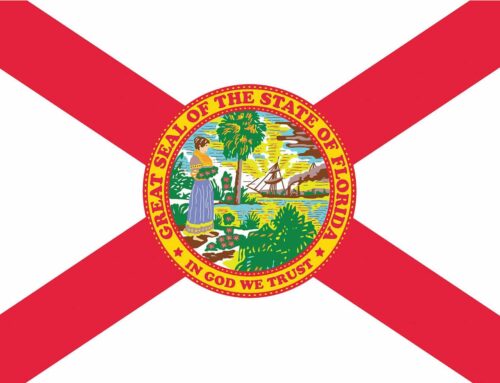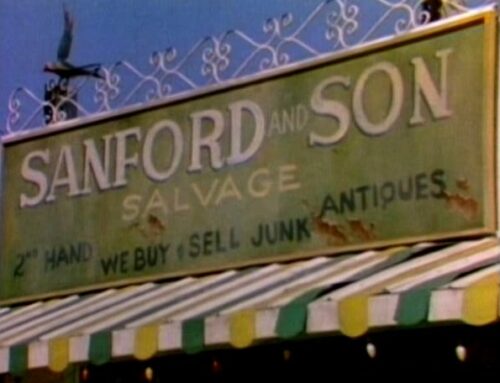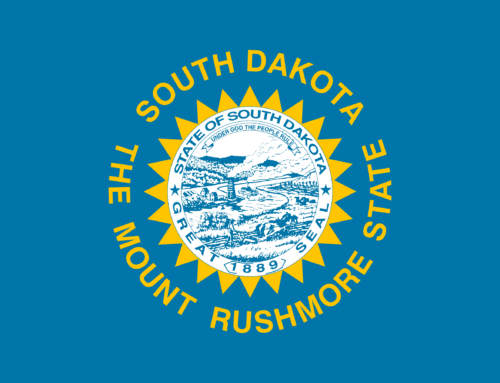GAP insurance covers the difference between the value of a car and the balance you owe on a car loan. If you take out a loan to buy a car, and your down payment is low, you may spend months or years owing more to the lender than your car is worth – a condition called negative equity, or being “upside down” on your car loan.
It’s normally a temporary condition: Over time, as you make payments on your loan, the balance declines, and eventually falls below the value of the car.
Until that happens, though, you as the car owner (or lessee, if you leased the car) are taking on some substantial risk: If the car is totaled, your car insurance policy normally pays you the actual cash value of the car. That is, the value of the car minus depreciation.
In the early months or years of a typical car loan, that can be a big problem: You still owe the lender the money, even if the car is totaled. And if you’re “upside down,” the settlement from the insurance company is going to be a lot less than the money you owe on the car.
You probably won’t get the insurance money directly. The insurance company will pay the lender. And you’ll get billed for the remaining balance. Which could be thousands of dollars. Especially if it got totaled or stolen
Meanwhile, you don’t have a car. Which maybe means you can’t get to work. So it’s going to be tough to pay off that balance.
To make matters worse, you’re going to have a tough time financing another car while you still have the balance on the first loan on your credit report.
This can be a significant financial hardship for a lot of people.
If you’re in this boat, and you would be hard-pressed to come up with the cash to pay off the remaining balance on your car loan if you totaled the car in a wreck tomorrow, you might need GAP insurance.
The term “GAP” actually stands for “guaranteed asset protection.” If you have GAP insurance on the car, and you total it, or it gets stolen or destroyed, the insurance company will pay off the loan balance on the car. Not just the actual cash value. (Note: Some GAP policies are “capped” at, say, 125% of the actual cash value of the car. Check the contract for specifics).
If you’ve financed a car, and you’re not in a position to write a check to make the problem go away if you wreck the car tomorrow, you should consider buying GAP insurance.
But don’t get it from the dealer.
Here’s why:
The finance desk guys at the dealership are trained to sell GAP insurance. It’s a big profit center for them. In fact, it’s routine for the dealership to make far more money at the finance desk than they do on the car lot.
The dealership is counting on your ignorance. They’ll just say “Do you want GAP insurance?,” Or “Do you want us to pay off your car loan balance if your car is totaled?”
And then they just add an inflated premium to your car loan.
So they can charge you interest on it.
They’re counting on you to just take it.
And they’ll sell you the most expensive GAP insurance on the market.
They don’t help you compare the terms and conditions of the GAP insurance policies.
They aren’t showing you multiple competing insurance companies.
Honestly, they don’t even tell you anyone is out there competing for that business! They want you to think the finance desk at the dealership is the only place you can buy GAP coverage.
And that’s just not true.
The fact is that there are lots of insurance companies out there that would be happy to sell you GAP insurance. And they will compete for your business. And they will sell you GAP insurance on your vehicle without larding up your loan balance so they can charge you interest.
And without paying a fat commission to the dealership and inflating the finance desk guy’s bonus.
On average, when you buy GAP coverage from the dealer, they will charge three to four times the real going rate for GAP coverage if you go through your car insurance agent rather than the finance desk.
And it get worse: When they add the up-front premium to your 15% to 29% car loan (for you folks who have bad credit), you wind up financing the premium at an atrocious interest rate for up to 60 to 72 months – the length of today’s typical car loans.
Even though after a year or two, you won’t be upside down and you won’t need GAP insurance anymore.
At that high interest rate, you’ll wind up paying three or four times what your GAP insurance really costs.
Meanwhile, your car dealer is making out like a bandit:
- They get a profit margin on the car.
- They’re getting a “dealer fee” on top of the profit margin.
- They get a kickback from the lender for placing the loan.
- They get a bigger kickback if they charge you a higher interest rate on the car loan.
- They get a kickback from the GAP insurance company for placing the policy.
- They get an additional kickback from the lender for financing the policy – increasing the size of the loan.
- They get an even bigger kickback on the interest rate if it exceeds the target threshold!
But wait: It gets worse.
Think about it: When do you need GAP insurance?
You only need during the first 1 to 3 years of owning a financed car. After that, you’ll have paid down the original loan enough so that you’re not upside down anymore. There’s no “gap” to insure.
But dealer-sold GAP insurance is priced like it lasts all 48 to 72 months of the car loan. And if they get a lump sum from you (they usually do, either when you just write the check or they bundle it into the loan) you’re out the opportunity cost on that cash. Or worse, you’re paying interest on it for the entire time.
You can easily spend 5 to 10 times the real price for GAP insurance by going through your dealer’s F & I desk instead of through a car insurance professional who actually gets insurance carriers to compete for your business.
I’ve seen cases where people get taken for 30 and 40 times what they should be paying for GAP coverage.
It’s in your best interest to break up this tidy little arrangement car dealers have with their finance companies and their in-house insurance vendors.
How to Buy Gap Insurance (Without Getting Ripped Off by Car Dealerships
If you want or need GAP insurance, the best way to buy it is to shop around multiple car insurance companies, with the GAP insurance included in the quote.
The easiest way to do this, by far, is to go through an independent car insurance agent.
Many agents are captive. That means they can only sell a policy from a single carrier. So maybe you’ll get a good deal. Maybe you won’t. It’s hit or miss.
But don’t assume you’ll get a good rate because you’ve been a loyal customer for your insurance carrier for years. When you go through a captive agent, they assume you’re not shopping around. They assume you’re not price-sensitive. And they jack up your premiums.
To short-circuit their shenanigans, use an independent car insurance agent who can get competing quotes from many different car insurance companies. Not just one.
Because insurance companies who sell through independent broker channels rather than captive sales forces know they’re competing with other carriers, they have an incentive to quote you a good, competitive price.
They can’t “price gouge” you if you’re getting quotes from nine different highly-rated car insurance companies!
The independent car insurance professional can line up those quotes for you. The captive car insurance agent in the giant call center or the local strip mall who sells auto, home, and life insurance for the same insurance company can’t.
Shopping around and keeping them honest is the most single factor in getting the best price for good coverage.
Beware the Trade-In “GAP Trap”
The other “GAP trap” people run into happens when they trade an old vehicle in for a different one. If you trade in a vehicle and you’re still upside down on the loan, the dealer will “roll the negative equity into the new loan.”
So you start out even deeper underwater with your newer car than you would haven otherwise.
Then, they’ll try to sell you GAP insurance. But the GAP insurance won’t cover the negative equity your loan inherited from the old vehicle. And the dealer’s not going to credit you with the full retail fair market value of your trade-in on the paperwork anyway. Which makes the “gap” even bigger.
So unless you are aware of the negative equity issue and that your new GAP insurance policy won’t cover the negative equity rolled into your loan, you could still wind up with a big problem if your new car is totaled in the first couple of years of owning it – even though you paid for GAP insurance. It will cover part of the problem. But you’ll still be on the hook at least for whatever amount your dealer wound up rolling forward into the loan in your newer car.
Vehicle Replacement Coverage
Some car insurance companies will sell you a full replacement policy on a new car. This means instead of paying out the car’s depreciated actual cash value, the policy will pay out what it costs to buy the same make and model, new – minus your deductible.
The carrier will pay out the full verifiable cost of replacing the vehicle. However, if you bought an extended warrantee or other extras not part of the car itself, the full replacement coverage won’t cover that. However, verifying replacement cost is usually pretty easy, since dealers advertise their prices, and new car prices don’t vary like used car prices do.
This is a bigger payout, which represents a bigger risk to the carrier, obviously. So naturally the premiums will be higher. But if the car is a total loss, you won’t have any worries while the replacement coverage clause is in force.
But these policies are structurally different from GAP insurance policies in important ways that you should be aware of:
First, the full replacement clause is usually limited to the first year or two. After that, the full-replacement protection goes away. And you still might be upside down on the loan.
So maybe you’ll want to buy GAP insurance for another year or so until you build enough equity in the car to fully offset your car loan balance.
But even so, it’s a lot cheaper to buy a year’s worth of GAP insurance on a smaller gap (because you’ve paid down the car loan a bit) than it is to buy it from the dealer at the car lot!
The second thing to be aware of with full replacement coverage policies is exclusions. They’ll all cover accidents and natural disasters. But some replacement clauses won’t cover theft or vandalism.
But theft and vandalism are both very real risks, depending on where you live and what kind of car you are insuring.
Third, full replacement insurance contracts only pay for original factory or dealer-installed extras. Not after-market parts or accessories. So if you bought your gee-whiz subwoofers, your aphrodesiac chrome rims, and your awesome-sauce “La Cucaracha” custom car horn elsewhere, those won’t be included.
Nevertheless, full replacement coverage has its place. And if you live and work in a good low-crime area and you can keep the car secured, it may be worth looking at when you are shopping around for insurance on a new car.
If you have a heavily-modded or custom car, rather than something stock from the dealership, neither a GAP insurance contract or a full replacement cost policy will adequately address your risk. If you’re in this boat call us today and ask to speak with an agent about an agreed value policy. That’s a custom policy where we take the value of your modifications and aftermarket parts into account.
Whatever your situation, your best move is to shop different car insurance carriers every year or so, using a fully independent car insurance professional broker, rather than a captive agent.
Ready to get started? Contact Select Insurance Group today. Tell us about your situation. We’ll take your information and shop it to multiple quality carriers. So you can be confident you’re getting a good, fair deal on a well-designed policy that fits your circumstance.
And don’t let the car dealership rip you off!
See you on the road.
Steve “Mr. Insurance” Ludwig
CEO, Select Insurance Group





